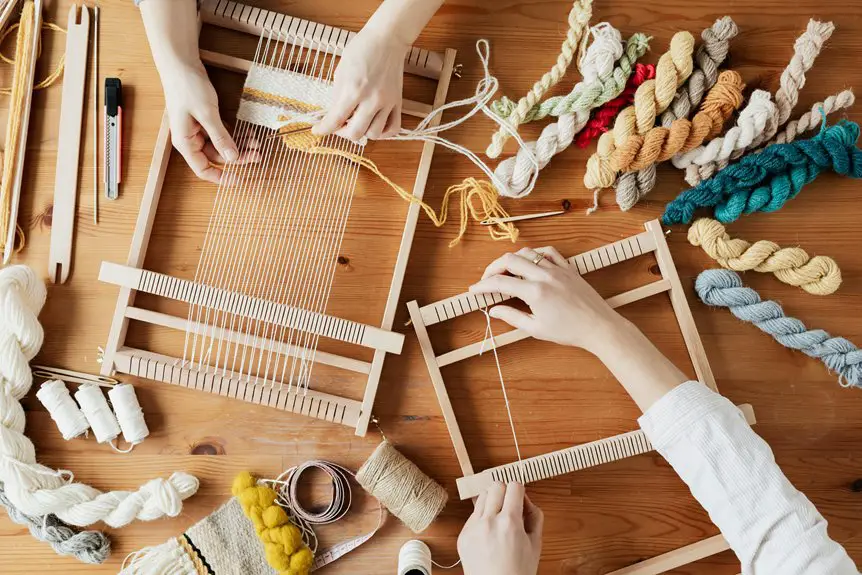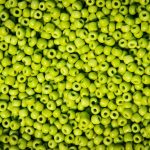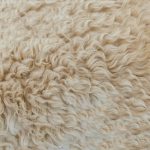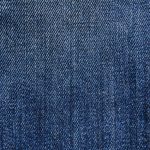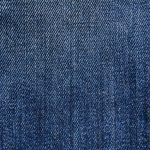Polyamide yarn is a strong, durable synthetic fiber made from repeating amide units, ideal for weaving and knitting. You’ll appreciate its smooth texture, flexibility, and excellent abrasion resistance, which makes your projects long-lasting and lightweight. It wicks moisture and dries quickly, keeping your work comfortable. While it differs from natural fibers in feel and breathability, its easy care and vibrant color retention make it a favorite. Keep exploring to discover how to best handle and care for polyamide yarn.
Table of Contents
Key Takeaways
- Polyamide yarn is a strong, lightweight synthetic fiber made from repeating amide groups, ideal for durable weaving and knitting projects.
- It features excellent tensile strength, abrasion resistance, and moisture-wicking properties, keeping garments comfortable and long-lasting.
- Produced by melting and extruding polyamide pellets into fibers, then stretching for enhanced strength and smooth texture.
- Compared to natural fibers, polyamide yarn is shinier, more durable, dries faster, and resists pilling and mildew.
- Handle with smooth tools, avoid tight tension, wash gently in cool water, and dry flat to maintain shape and longevity.
Understanding Polyamide: Composition and Properties
Polyamide, commonly known as nylon, is a synthetic fiber made from repeating units of amide groups.
When you work with polyamide yarn, you’ll notice its strength and flexibility stand out. It’s lightweight yet durable, making it ideal for both weaving and knitting projects.
You’ll appreciate how polyamide resists abrasion and stretches without losing shape, which helps your finished pieces maintain their form over time. Additionally, it dries quickly and resists mildew, perfect if your creations need regular washing.
Because it’s smooth and slippery, polyamide yarn can be a bit tricky to handle at first, but its resilience and vibrant color retention make it worth the effort.
Smooth and slippery, polyamide yarn challenges handling but rewards with resilience and vivid color retention.
Understanding these properties helps you choose polyamide yarn wisely for your next textile project.
The Production Process of Polyamide Yarn
Although the production process involves several complex steps, you’ll find that understanding how polyamide yarn is made can help you appreciate its qualities even more.
It starts with melting polyamide pellets, turning them into a thick liquid. This molten polymer is then pushed through spinnerets—tiny holes that shape the liquid into fine filaments. As these filaments cool and solidify, they form continuous fibers.
You’ll notice they’re drawn and stretched to align the molecules, boosting strength and elasticity. Afterward, the fibers are gathered into yarns, and sometimes treated to add softness or color.
Each step guarantees the yarn you use is durable, flexible, and suitable for various textiles. Knowing this process gives you insight into why polyamide yarn behaves the way it does in your weaving or knitting projects.
Comparing Polyamide Yarn to Natural Fibers
When you compare synthetic yarns to natural fibers, you’ll quickly notice differences in texture, durability, and care requirements.
Polyamide yarn feels smoother and often has a slight sheen, while natural fibers like wool or cotton offer a softer, more organic touch. You’ll find polyamide is generally more durable and resistant to abrasion, making it less prone to pilling or tearing.
However, natural fibers tend to breathe better, keeping you cooler or warmer depending on the material.
Regarding care, polyamide is easier to wash and dries faster, but natural fibers may need gentler handling to avoid shrinking or felting.
Knowing these distinctions helps you pick the right yarn for your project’s needs, balancing comfort, performance, and maintenance.
Benefits of Using Polyamide Yarn in Weaving and Knitting
When you choose polyamide yarn for your weaving or knitting projects, you get exceptional durability and strength that stands up to wear.
You’ll also appreciate its moisture-wicking properties, which keep your creations comfortable and dry.
Plus, polyamide holds color brilliantly, ensuring your work stays vibrant wash after wash.
Durability and Strength
A key advantage of polyamide yarn lies in its impressive durability and strength, which make it ideal for both weaving and knitting projects.
When you work with polyamide, you get a yarn that resists wear and tear better than many natural fibers. This means your finished pieces hold up well under frequent use and washing. You won’t have to worry about your knitted garments or woven items stretching out or losing shape easily.
Plus, polyamide’s strength allows you to create intricate designs without fear of the yarn breaking during the process. Whether you’re crafting everyday wear or decorative textiles, polyamide yarn provides reliable resilience, ensuring your projects maintain their quality and longevity over time.
Moisture Wicking Properties
Anyone who’s worked with polyamide yarn knows it excels at managing moisture, making it a top choice for activewear and breathable textiles.
When you weave or knit with polyamide, you create fabrics that quickly pull sweat away from the skin, helping you stay dry and comfortable during physical activity. This moisture-wicking ability prevents dampness, reducing irritation and chafing.
Plus, polyamide dries faster than many natural fibers, so your garments feel fresh sooner after washing or wearing. If you make items for exercise or outdoor use, polyamide yarn’s moisture management enhances performance and comfort.
You’ll appreciate how this property keeps your creations functional and breathable, especially in warm or humid conditions, without sacrificing durability or shape.
Color Retention and Vibrancy
Because polyamide fibers hold dye exceptionally well, your woven or knitted pieces maintain vibrant colors wash after wash.
You’ll notice that the hues stay rich and don’t fade easily, even with frequent laundering or exposure to sunlight. This means your creations look fresh and eye-catching longer than many other fibers.
Polyamide’s strong affinity for dyes guarantees that colors are evenly absorbed, giving your work a consistent and professional finish.
Whether you’re crafting bold patterns or subtle tones, you can trust that the vibrancy will stay intact.
Choosing polyamide yarn helps you create durable, colorful items that retain their beauty over time, saving you the hassle of color fading and keeping your projects looking lively and new.
Common Uses and Applications for Polyamide Yarn
You’ll find polyamide yarn everywhere, from sportswear and activewear to upholstery and home textiles.
It’s also a go-to in industrial and technical applications because of its strength and durability.
Let’s explore how this versatile yarn fits into each of these areas.
Sportswear and Activewear
When you choose polyamide yarn for sportswear and activewear, you’re tapping into a fabric known for its exceptional strength and flexibility. This yarn resists abrasion, making it perfect for garments that endure rigorous movement and frequent washing.
You’ll appreciate its moisture-wicking properties, which help keep you dry and comfortable during intense workouts. Polyamide’s lightweight nature means your activewear won’t weigh you down, allowing for better performance and freedom of movement.
Plus, it dries quickly, so you’re ready to go again in no time. Whether you’re knitting seamless leggings, durable running tops, or breathable sports bras, polyamide yarn offers the durability and comfort you need to stay active.
It’s no wonder many manufacturers rely on it for high-performance athletic wear.
Upholstery and Home Textiles
Durability stands out as a key reason polyamide yarn is popular in upholstery and home textiles. You’ll find it in sofas, curtains, rugs, and cushions because it resists wear and tear while maintaining vibrant colors. Polyamide’s resistance to stains and moisture makes it perfect for high-traffic areas. Plus, it’s easy to clean and retains shape, so your textiles look fresh longer. When choosing polyamide for your home, consider the fabric’s texture and finish to match your style and comfort needs.
| Application | Benefit | Typical Use |
|---|---|---|
| Sofas | High abrasion resistance | Upholstery fabric |
| Curtains | Colorfastness | Light filtering |
| Rugs | Moisture resistance | Durable floor covering |
| Cushions | Shape retention | Comfortable seating |
| Slipcovers | Easy cleaning | Protective covers |
Industrial and Technical Uses
Beyond home textiles, polyamide yarn plays an essential role in industrial and technical fields where strength and performance matter most.
When you need durable materials for items like ropes, conveyor belts, or tire cords, polyamide yarn delivers exceptional tensile strength and abrasion resistance.
You’ll also find it in protective clothing, where its lightweight yet resilient nature offers safety without sacrificing comfort.
In automotive and aerospace industries, polyamide yarn helps create components that withstand harsh conditions and heavy use.
Plus, its excellent elasticity and chemical resistance make it ideal for fishing nets, parachutes, and industrial filters.
Tips for Working With Polyamide Yarn
Although polyamide yarn offers excellent strength and elasticity, you’ll want to handle it carefully to prevent snagging or stretching.
Use smooth needles or hooks to reduce friction, which can cause the fibers to catch. Avoid pulling too tightly when knitting or weaving; polyamide’s stretch means it can easily deform under tension.
Keep your workspace free from rough surfaces or sharp objects that might snag the yarn. When joining new strands, use techniques like the Russian join to maintain a smooth finish.
Be mindful of your gauge, as polyamide’s elasticity can affect tension and drape. Finally, test a small swatch before starting a project to see how the yarn behaves with your chosen pattern and tools, ensuring a polished final piece.
Caring for and Maintaining Polyamide Fiber Creations
When you care for polyamide fiber creations properly, they maintain their strength and vibrant appearance over time.
Always wash them in cool or lukewarm water using a gentle detergent to prevent damage. Avoid bleach and fabric softeners, as they can weaken the fibers. Hand washing is best, but if you use a machine, select a delicate cycle and place your items in a mesh laundry bag.
Dry your polyamide pieces flat to keep their shape, and never wring them out. Avoid direct sunlight when drying, as UV rays may cause fading.
Store your creations in a cool, dry place away from heat sources. Following these steps helps your polyamide yarn projects stay durable, bright, and comfortable for years to come.
Frequently Asked Questions
Can Polyamide Yarn Be Recycled or Is It Biodegradable?
You can recycle polyamide yarn, but it’s not biodegradable. While it breaks down slowly in nature, recycling helps reduce environmental impact. So, consider recycling your polyamide yarn to keep waste minimal and eco-friendly.
How Does Polyamide Yarn Perform in Extreme Weather Conditions?
You’ll find polyamide yarn performs well in extreme weather; it resists moisture, dries quickly, and maintains strength in cold or heat. However, prolonged UV exposure can weaken it, so consider protective treatments for outdoor use.
Are There Any Health Concerns When Working With Polyamide Yarn?
Did you know 5% of people experience skin irritation from synthetic fibers? When working with polyamide yarn, you might notice mild allergies or respiratory issues, so always guarantee proper ventilation and wash hands after handling it.
What Are the Environmental Impacts of Producing Polyamide Yarn?
You should know producing polyamide yarn uses significant energy and non-renewable resources, leading to greenhouse gas emissions. Plus, it’s not biodegradable, so it contributes to plastic pollution if not recycled properly.
Can Polyamide Yarn Be Dyed at Home Effectively?
Dyeing polyamide yarn at home is like painting a smooth canvas—you’ll need the right acid dyes and heat. If you follow instructions carefully, you’ll transform your yarn into vibrant colors that won’t easily fade.
- Does Chiffon Fabric Stink - July 15, 2025
- Does Chiffon Fabric Affect the Economy - July 15, 2025
- Does Cotton Fabric Have a Nap - July 15, 2025

